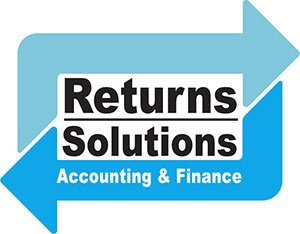Blog Post 1
Business owners pay taxes based on their net income, which is the profit after deducting allowable business expenses from their gross income. To reduce the amount of taxable income, businesses claim deductions, which are expenses necessary for operating the business.
Common deductions include:
- Operating expenses: Rent, utilities, supplies, and office expenses.
- Salaries and wages: Payments made to employees.
- Cost of goods sold: Direct costs associated with producing goods, such as materials and labor.
- Business travel and meals: Travel-related costs for business purposes, with limitations on meal deductions.
- Insurance premiums: For business-related insurance such as liability, property, or health insurance for employees.
- Vehicle expenses: If a vehicle is used for business purposes, the cost of maintenance, fuel, and depreciation can be deducted.
- Depreciation: The gradual reduction in the value of business assets, like machinery or buildings.
- Interest on business loans: Interest payments made on loans taken for business purposes.
These deductions help reduce the taxable income, lowering tax liability.
As a business owner for over 30 years, I’ve learned how to track expenses. That’s a valuable skill to have, especially with your long-standing experience. Tracking expenses efficiently helps with tax deductions and provides a clear picture of your business’s financial health. Do you use any specific tools or methods for expense tracking? Yes, I do. I used the one I developed based on my systems and ensured the site was easy to use. For more information, go to our website returns.solutions
Blog Post 2
Reconciling a supplier’s monthly statement involves matching the statement’s entries with your records, ensuring that all transactions align accurately. Here’s a step-by-step guide:
Gather Necessary Documents
- Supplier’s monthly statement
- Copies of all invoices, purchase orders, and delivery notes
- Internal ledger entries and records of payments
Review the Statement
- Please review the supplier’s monthly statement to determine which invoices or credits are listed, as well as the opening and closing balance.
Match Invoices and Credits
- Could you check each invoice and credit note from the supplier’s statement against your records?
- Please ensure that each invoice amount matches your purchase orders and delivery records.
Verify Payments
- Could you compare your payment records against the statement to confirm that all payments are listed and accurately applied?
- Note any discrepancies, like missing payments or incorrect amounts.
Identify Discrepancies
- For unmatched invoices, find out why they were not recorded in your books.
- Could you contact the supplier for clarification or corrections regarding overcharges, undercharges, or discrepancies?
Update Records
- Could you adjust your accounting records to reconcile with the supplier’s statement?
- Record all verified transactions, including any credits, if missing or inaccurately recorded.
Final Check and Filing
- Once all entries are matched and discrepancies resolved, file the reconciled statement and supporting documents for future reference.
This process keeps your records accurate, helps avoid overpayments, and strengthens your supplier relationship. Reconciliation can take several hours to confirm that no fraudulent transactions are present. Returns.Solutions can do the reconciliation in a matter of minutes.
Blog Post 3
When the IRS conducts an audit, they look for detailed and accurate records to verify the information you’ve reported on your tax return. Returns.Solutions accounting and finance programs can do just that. Here’s a breakdown of what the IRS typically wants to see:
Income Records
Proof of income reported on tax returns, such as:
- 1099s (e.g., for self-employment or other miscellaneous income)
- W-2s (wages and salary)
- Bank statements or deposits
- Invoices and receipts for sales and services
They will verify that all sources of income, even small ones, are reported accurately
Expense Documentation
Receipts and proof of payment for deductions claimed, including:
- Business expenses (meals, travel, supplies)
- Home office deductions (if claimed)
- Charitable contributions
- Medical expenses (if relevant)
Invoices, canceled checks, bank statements, and detailed receipts are essential to back up deductions.
Proof of Business Expenses (for business owners)
Records of all deductible business expenses, such as:
- Mileage logs if claiming vehicle expenses
- Utility bills and rent if claiming a home office deduction
- Payroll records if you employ others
Well-maintained records, such as ledgers, expense reports, and receipts for all purchases, are crucial for audits.
Bank and Credit Card Statements
Statements from both personal and business accounts may be reviewed to confirm that income and expenses align with the amounts reported on your tax return.
Travel and Entertainment Logs
If you claim travel or entertainment expenses, you need detailed logs that include the date, location, purpose, and individuals involved to justify these deductions.
Employee and Payroll Records (if applicable)
Payroll records, W-2s, 1099s, and employment agreements if you have employees or subcontractors. They’ll look at how payroll taxes were calculated and paid.
Asset Records
Records of assets owned by the business, including:
- Purchase price and date
- Records of depreciation
- Documentation of sales of any business assets
Previous Audit Reports
- If you’ve been audited before, the auditor may check whether you’ve complied with any recommendations or corrections made during the previous audit.
Miscellaneous Documentation
Other records that substantiate income, deductions, credits, or other items on the return, like loan documents, contracts, and relevant correspondence.
Tips for Avoiding Red Flags:
- Ensure all documents match your reported figures.
- Avoid discrepancies between your income records and bank deposits.
- Be meticulous with documentation for unusual deductions or significant transactions.
